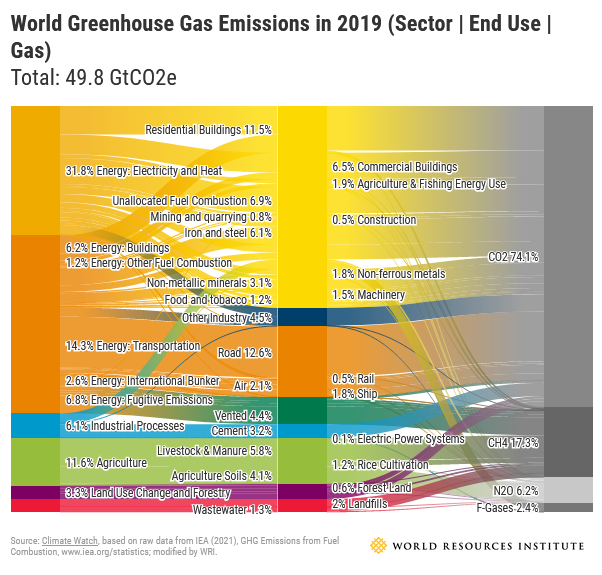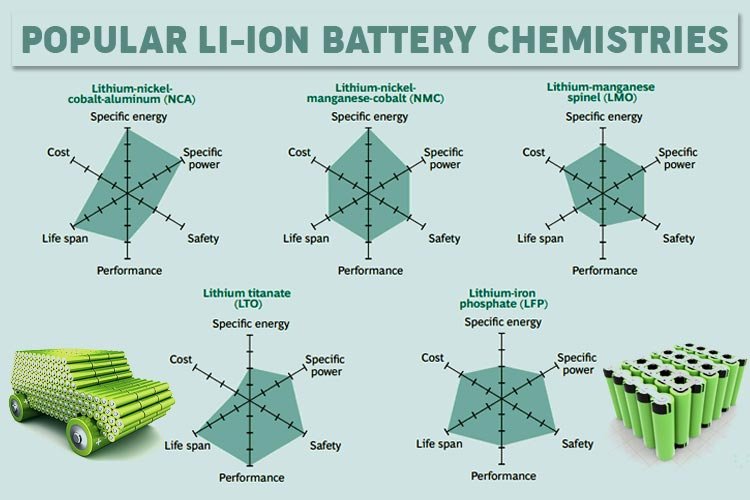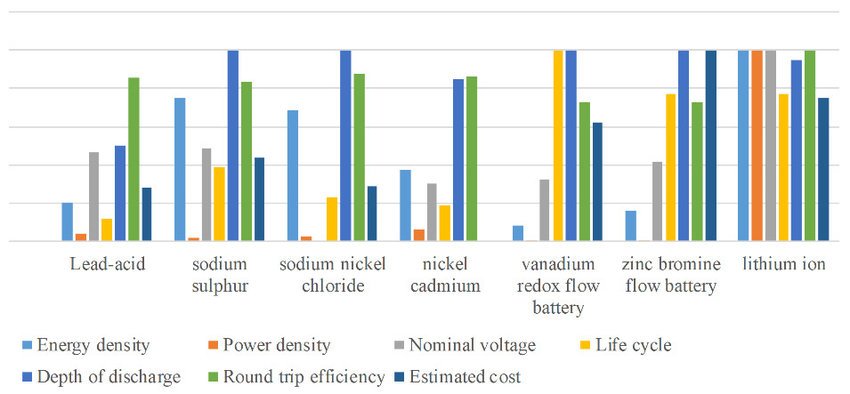In 2021, renewable energy sources accounted for around 20% of total power output. To effectively exploit the promise of renewables, we need bigger energy storage systems, which will necessitate a wide range of battery chemistries.

Lead, lithium, and vanadium redox flow are the three most common battery technologies. When deciding on the best battery chemistry for your energy storage needs, there are several factors to consider.
Commercial Maturity
Lead, which was invented in 1859, is the most economically mature of the three battery types and has long been the dominant energy storage method. Another economically established technology is lithium. It was first utilized for consumer goods in the early 1990s.
Despite the fact that vanadium redox flow battery technology has been around for more than 50 years, it is the least commercially developed of the three chemistries. NASA pioneered the concept of vanadium flow batteries to power satellites.

Sustainability
Lead is the most environmentally friendly of the three battery chemistries. These batteries are 99 percent recyclable, and the lead battery industry has a well-developed circular economy that reuses and recycles spent battery lead, electrolyte, and plastic components.
Vanadium is nearly indefinitely recyclable. The electrolyte that makes up the majority of a vanadium battery system may be dried up, cleaned, and reused in another system.
Lithium is currently the least sustainable because of the expense and complexity of the procedure, the recycling rate is less than 5%.
Operation Hours
Energy storage is commonly used for energy shifting, such as storing renewable energy to be used later or storing grid electricity to be utilized during an outage.
Vanadium is ideal for long-term energy storage (six hours or more operating time). Lithium is suitable for short to medium-term use (from a few minutes to four hours operating time).
Lead is also suitable for short to medium duration, especially when the depth of discharge is moderate and cheap up-front cost is a crucial deciding factor. Similar to a lithium system, it is possible to extend the duration by adding cells.

Useful Life
Cycle life, calendar life, and the operational environment all contribute to useful life. A lithium battery has a useful life of 10 to 15 years, but vanadium batteries can endure for more than 30 years. Depending on the design and use, lead batteries can have a useful life of up to 30 years.
These lifespans are dependent on regular maintenance for all battery technologies.
The energy industry accounts for 76 percent of worldwide greenhouse gas emissions, thus a transition to clean energy in this sector is essential, but it will need numerous, dependable, sustainable, and secure energy storage technologies.
Reference- Science, Clean Technica, Stryten Energy Inputs, Interesting Engineering, Popular Science, WRI website






